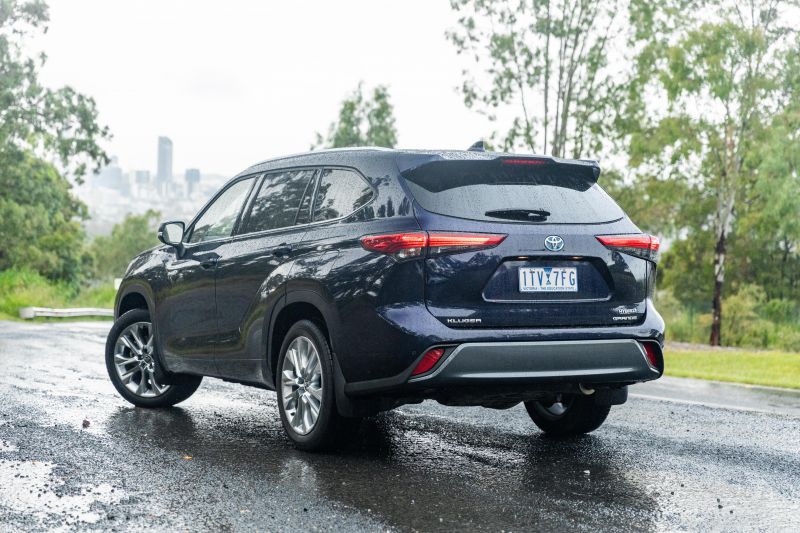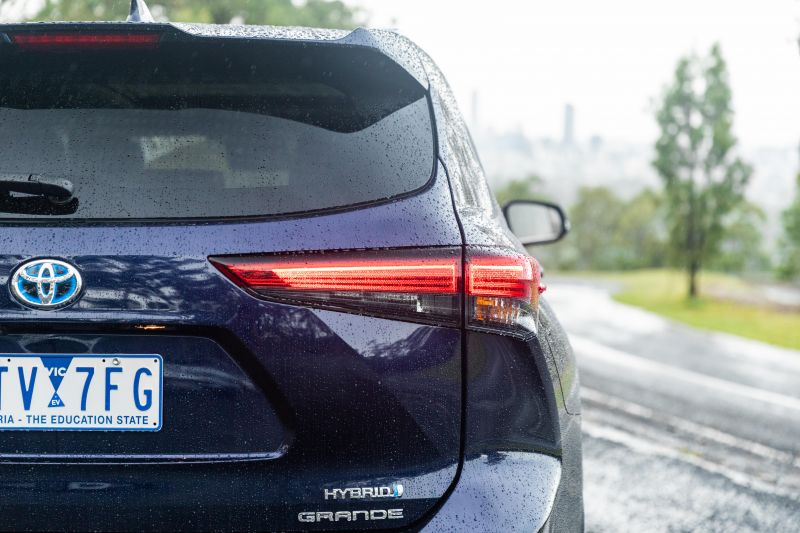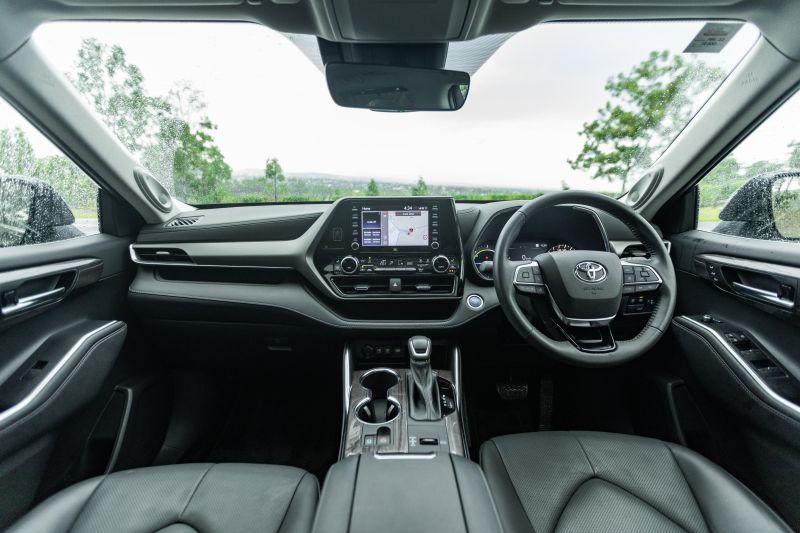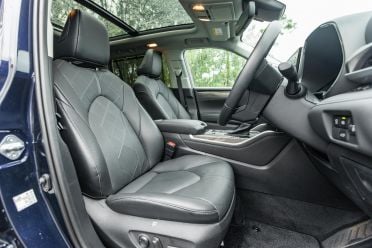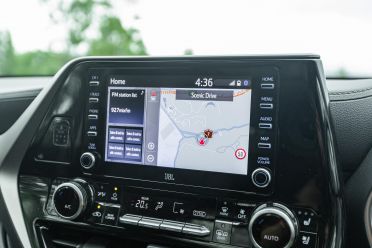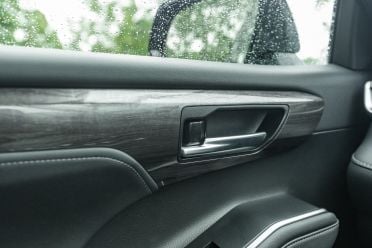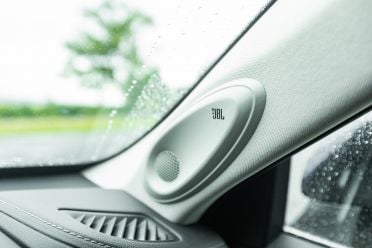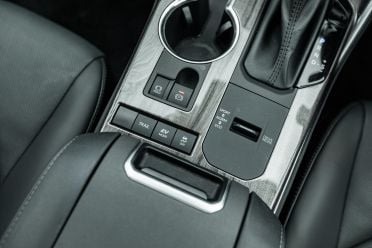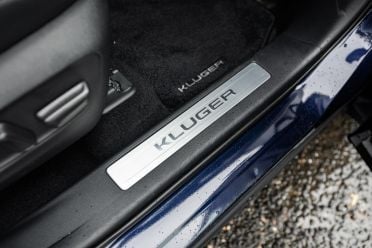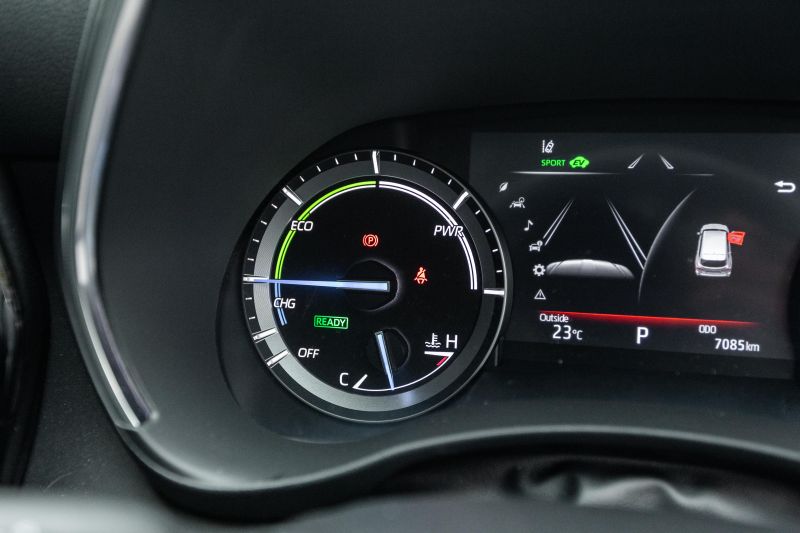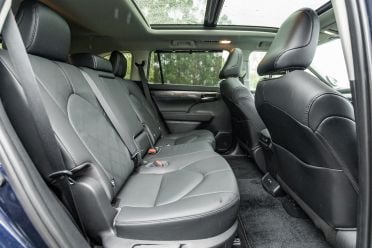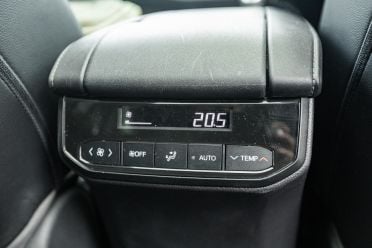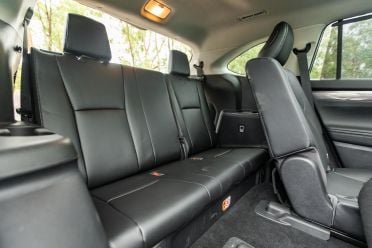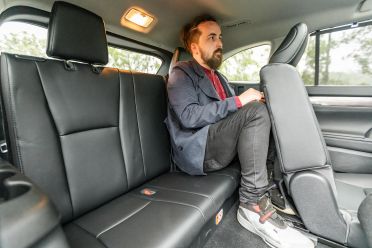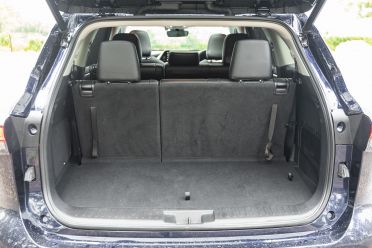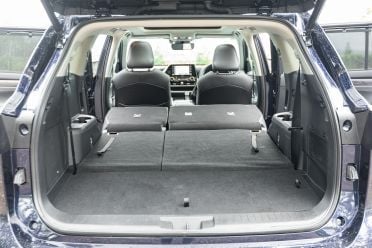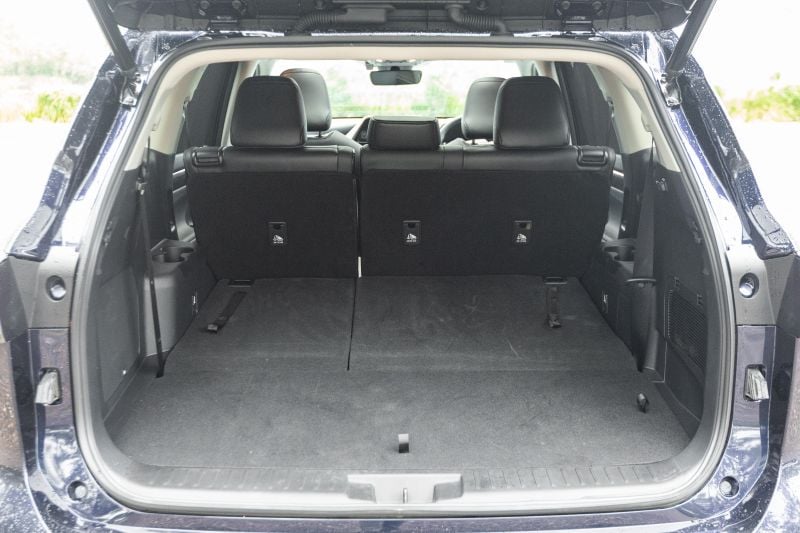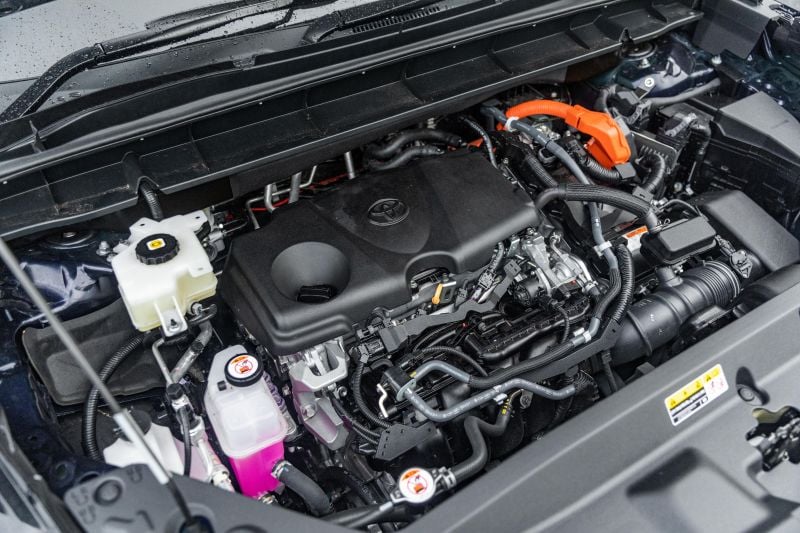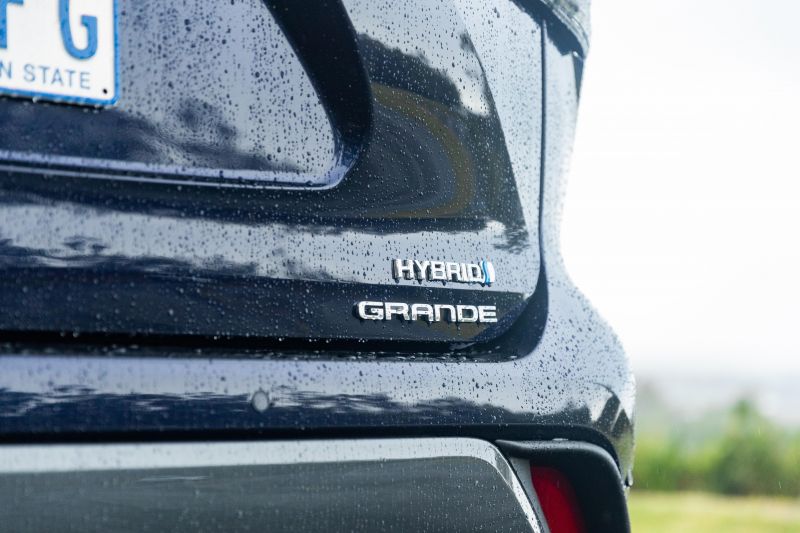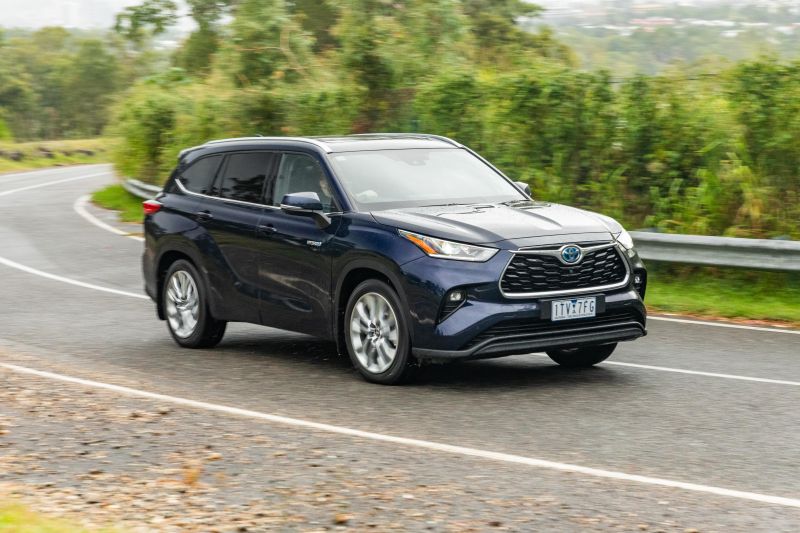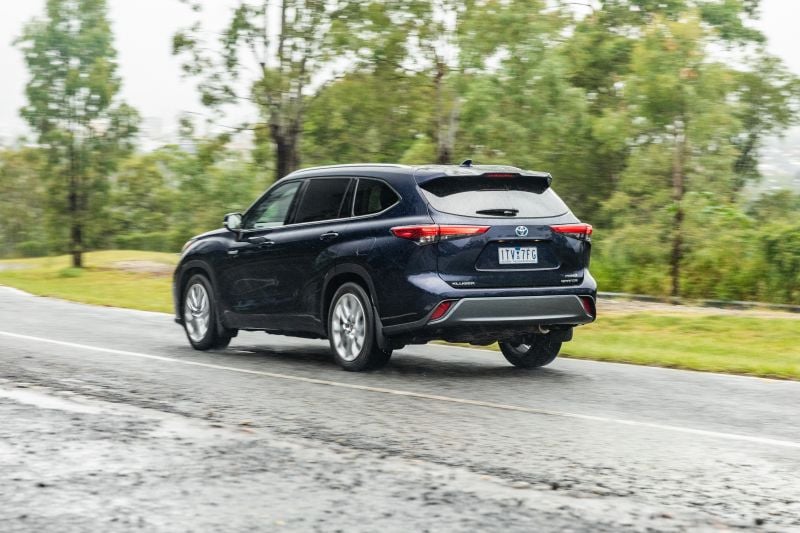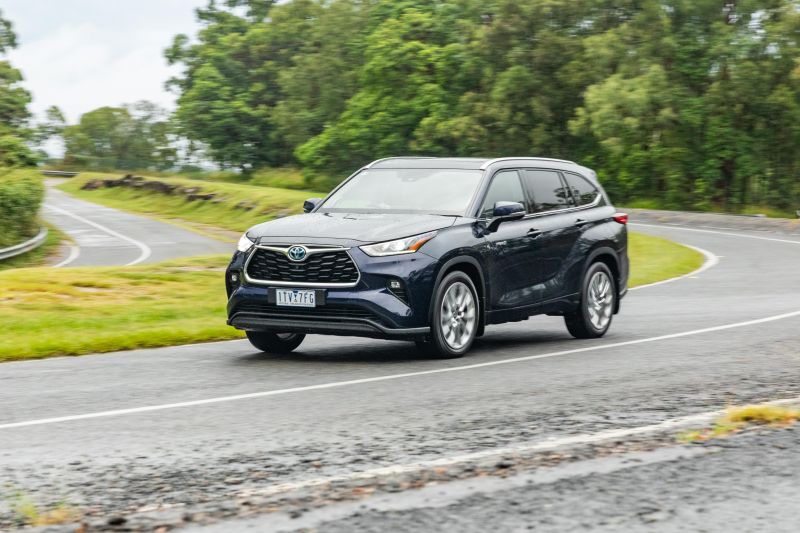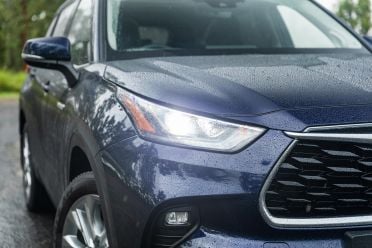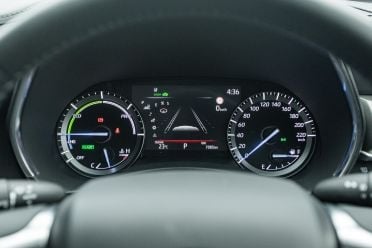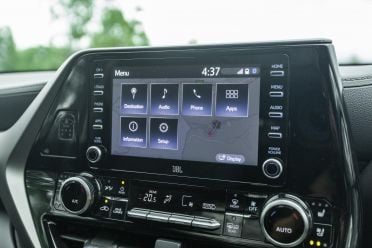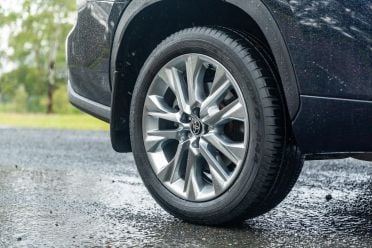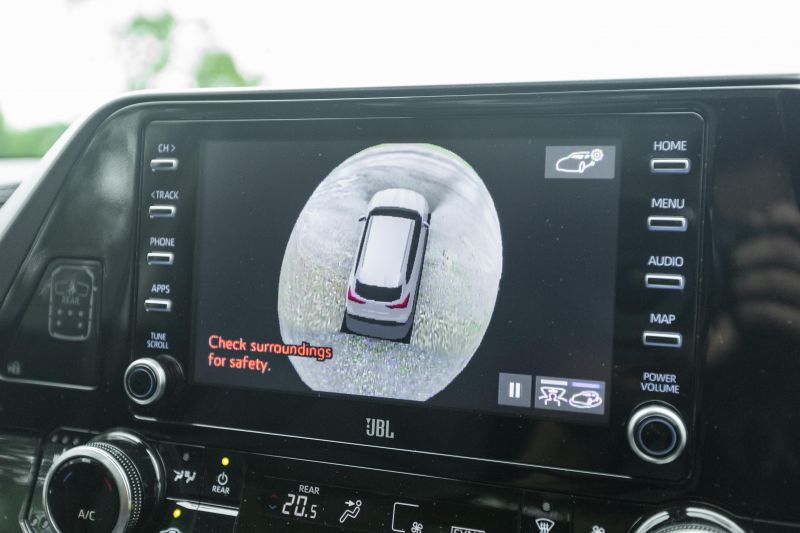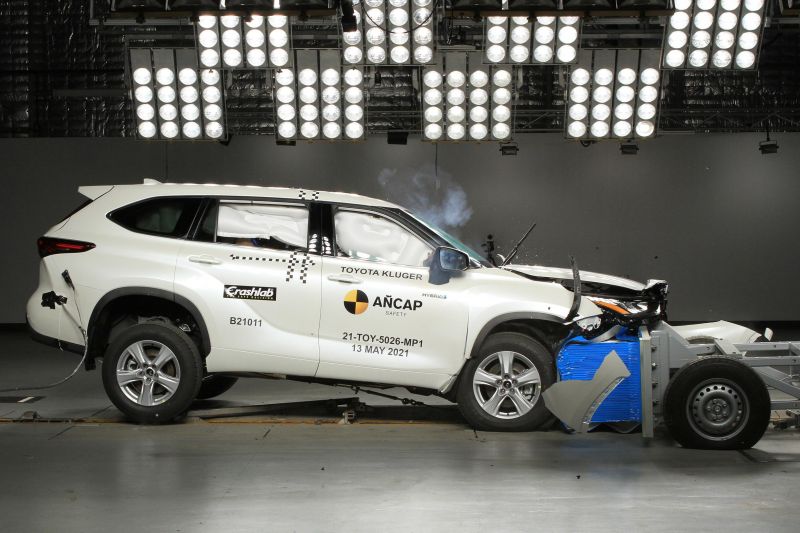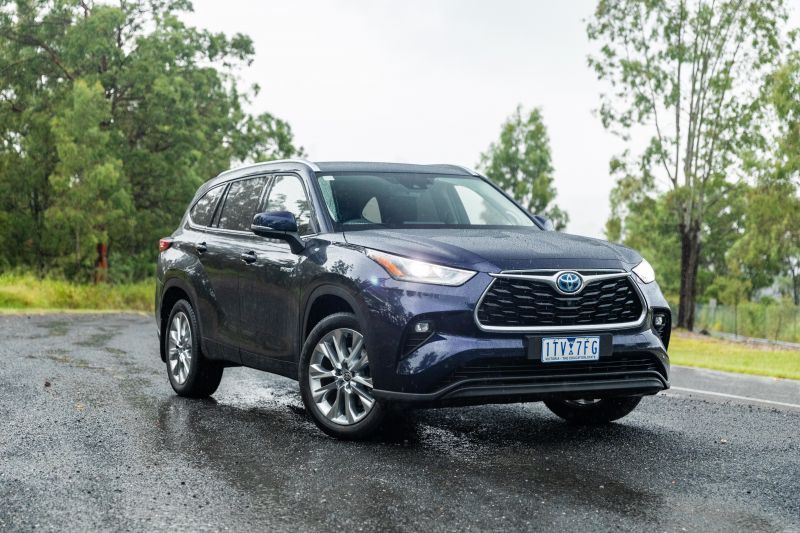Finally.
Toyota has offered a hybrid version of the Kluger in other markets since the very first generation, but the electrified option took until the current, fourth generation to arrive here.
Surprise, surprise, it’s a hit. Last year, 53 per cent of Klugers sold in Australia were hybrid models, despite the premium they carry.
The take rate isn’t quite at RAV4 levels yet (72 per cent), but we suspect as more people compare the Kluger Hybrid with its petrol V6 counterpart, the popularity of the former will grow.
Precious few vehicles in this segment offer a fuel-sipping hybrid. There’s a hybrid Kia Sorento now, but the Korean brand is only able to import tiny numbers of it. The Hyundai Santa Fe Hybrid has been delayed once again, while the new-generation Nissan Pathfinder will only be offered with a lone petrol V6 this time around.
While Toyota only makes the hybrid powertrain available with all-wheel drive, unlike the smaller RAV4, it’s offered across all three Kluger trim levels. That includes the flagship Grande, which we’ve put to the test.

How much does the Toyota Kluger Grande AWD Hybrid cost?
The Kluger range’s pricing covers a wide spectrum, with the flagship Grande Hybrid ringing up at $75,700 before on-road costs – almost $30,000 more than the cheapest Kluger variant.
Over the all-wheel drive Grande V6, the hybrid adds a premium of $2630. Compared with the front-wheel drive Grande V6, the gulf widens to $6540.
Based on a Sydney postcode, the Kluger Grande Hybrid rings up at $82,323 drive-away; add $650 for premium paint. That’s pricey for a Kluger, though there’s still a fairly large gap between this and the most affordable three-row Lexus RX. The outgoing RX350L, which rides an older platform than the current Kluger, starts at $86,513 list ($96,500 drive-away in NSW).
Looking at the Kluger’s few direct rivals, there’s the Kia Sorento GT-Line Hybrid AWD which costs $69,750 before on-roads, or $75,529 drive-away nationwide. A more affordable front-wheel drive version is available, priced at $66,750 list or $72,379 drive-away.
If you simply want lower fuel bills and don’t care what technology a vehicle uses to achieve them, the Hyundai Palisade and Santa Fe and Kia Sorento can all be had with a fuel-efficient turbo-diesel four-cylinder engine.
A top-spec Kia Sorento GT-Line diesel costs $65,070 ($68,990 d/a), while a Hyundai Santa Fe Highlander diesel is $66,050 ($71,476 d/a in NSW) and a Palisade Highlander diesel is $71,112 ($78,003 d/a in NSW).
What is the Toyota Kluger Grande AWD Hybrid like on the inside?
There isn’t a massive amount of differentiation inside between the Grande and the GXL one rung down.
The Grande is the only variant that offers a beige interior, however. That would be my choice, but I say that as someone who doesn’t currently have a set of sticky-fingered children traipsing through the cabin wearing dirty sneakers.
Our tester had the black interior and, apart from the presence of some wood grain trim around the shifter, quilted leather upholstery, and some (welcome) leatherette trim on the sides of the centre console, it’s much the same as the GXL.
That means the items that frustrated us in the GXL are doubly annoying in this more expensive flagship.
Chief among our grievances is the dated 8.0-inch infotainment system, particularly when we know a larger 12.3-inch display is available in other markets like the US. Here’s hoping we eventually get that as Toyota Australia gradually transitions to the new corporate infotainment system.
The current system lacks the crisp graphics of the Palisade or up-spec Mazda CX-9s, and it’s all rather dreary looking; the camera displays are also disappointingly low-resolution. In the pros column, response times are acceptable and there’s (wired) Android Auto and Apple CarPlay.
The lack of a wireless phone charger is puzzling, given there are at least two places where it looks like Toyota could have fit one.
While build and material quality is generally quite good, with plenty of soft-touch surfaces along the top two-thirds of the dash and doors and attractive stitching details, the Grande still has a couple of bugbears.
You can rock the cheap plastic of the shifter, while the otherwise attractive, tactile steering wheel is marred by a big plastic box at the rear of its base.
The overall dashboard design is a bit fussy, lacking the cohesive look of a Palisade. However, one design element that makes it look so fussy – a pair of ledges spanning from the steering wheel to the passenger’s door – prove quite practical.
You can keep items on the ledges and they won’t slide around easily, however they will be in the open for prying eyes to see. The Palisade’s enormous, concealable centre console ‘pit’ is a better storage solution.
Everything about the Kluger’s interior feels sensible. There are physical climate controls mounted nice and high, including large knobs, while the steering wheel switchgear is straightforward. The centre console bin is large, and has a nifty roll-top lid.
Analogue gauges are flanked by a large 7.0-inch colour information screen, though the V6’s tachometer is replaced with a large hybrid power meter as is Toyota hybrid tradition.
Toyota has been known to splash some gaudy fake wood trim in its cabins, but its use of the dead plastic trees is sparing in the Kluger Grande. You’ll find some on the centre console and on the doors, and it’s dark and glossy. On the dash itself, there’s just some metal-look plastic trim.
The seats are cushy and proved comfortable over long distances. In an often overlooked touch, the Toyota will also remember your heated/ventilated seat setting when you restart the vehicle.
You can adjust the rear climate controls from the front, but there’s also a control panel at the rear of the centre console where passengers can adjust temperature and fan speed.
Second- and third-row occupants alike get air vents, though there’s no separate climate zone for the rearmost row.
While second-row occupants get a pair of USB-A outlets, third-row occupants don’t receive anything of the sort. There are four cupholders back there, however.
Second-row occupants have ample headroom, leg room and knee room. At 180cm tall, I can comfortably sit behind my driving position with plenty of room to spare.
It’s possible to seat three abreast, and the drivetrain tunnel is minimal. The centre seat is slightly firmer and higher than the outboard seats, but it’s far from uncomfortable.
There are three top-tether points for child seats in the second row, as well as ISOFIX attachment points on the outboard seats. None exist in the third row.
It’s awkward clambering to the rearmost row, and with the second row in its default position it feels rather confining for an adult.
The roof fares in somewhat to accommodate the ceiling-mounted air vents, while leg room can’t match the CX-9 or Palisade.
You can make the third row more hospitable by sliding the second row forward, but it’s still best-suited for small children.
Indeed, Toyota is reportedly working on a stretched version of the Kluger in the US market, and such a model would be a better match for the likes of the Palisade.
There’s 241L of luggage space with all three rows up, 552L with the third row folded, and 1150L with the third and second rows folded.
For reference, Mazda quotes 230L for the more curvaceous CX-9 with all three rows upright and 810L with the third row dropped, while the Palisade has 311L with all rows up and 704L with the rearmost row folded.
What’s under the bonnet?
The Kluger Hybrid mates a 2.5-litre naturally-aspirated four-cylinder petrol engine producing 142kW of power and 242Nm of torque to three motor generators: two up front and one at the rear.
Total system output is 184kW, though Toyota doesn’t specify a combined torque figure. The transmission is an electronic continuously variable transmission (e-CVT) and hybrid Kluger models are available only with all-wheel drive.
That’s in contrast with the 218kW/350Nm naturally-aspirated 3.5-litre petrol V6, which can be had with either front- or all-wheel drive.
Over a mix of inner-city, suburban and highway driving, we averaged just 5.9L/100km – seriously impressive for something this size. Over the course of a week, it settled at 7.4L/100km.
For reference, across an identical drive loop, we averaged 11L/100km in a front-wheel drive GXL V6. This increased to 12.2L/100km over the course of a week.
The V6 does have an ace up its sleeve, however, in that it can run on cheaper 91 RON regular unleaded fuel. The hybrid requires 95 RON premium unleaded.
How does the Toyota Kluger Grande AWD Hybrid drive?
The Kluger Hybrid may be down 34kW compared with the V6, but this isn’t anywhere near as noticeable as it sounds.
The petrol V6 moves the Kluger around with decent authority but never feels especially powerful, and the four-cylinder hybrid doesn’t feel particularly slower.
If the hybrid feels any less rapid, it’s perhaps due to the sound – there’s a slightly buzzy note to the petrol engine when it kicks in, at least compared with the V6. Suffice it to say, the hybrid isn’t as mellifluous as the V6.
The V6, however, can’t glide around in pure electric mode at speeds of up to 20km/h. Toyota has been in the hybrid game for a long, long time now, and they know how to calibrate the combination of electric motors and petrol engines.
The Kluger shifts seamlessly between the two different propulsion types, though you get a bit of the classic CVT rev flare should you put your foot down.
The steering is light without feeling feather-light. There’s not a massive amount of road feel on hand, but the weighting suits the vehicle’s intended purpose and it’s easy to pilot the Kluger. A CX-9 has more steering feel, but the Kluger’s tiller feels more substantial than that of a Palisade.
Indeed, the Kluger is comfortable to drive and it never feels overly large or ponderous. It also proved to be a capable road-trip vehicle.
A lot of that is down to the well-judged ride. It’s soft without being floaty, and it absorbs bumps nicely. On a country road, the Kluger lopes along and you can easily clock up kilometres behind the wheel.
The combination of adaptive cruise control and Toyota’s Lane Tracing Assist also makes the Kluger a capable companion on Australia’s highways, and together the systems work well at keeping you at a set speed and centred in your lane.
Noise is also well-suppressed, with little in the way of road and wind noise entering the cabin even at highway speeds.
The traffic sign recognition works well, with the Kluger allowing you to press a single button while the adaptive cruise is active to adjust your speed to changing speed limits.
It’s not all rosy for the Kluger, however. The Toyo A44 Open Country tyres proved awful in the wet, particularly when braking on a downward slope. They would also squeal if we took a corner too quickly, although the Toyota’s E-Four all-wheel drive system can also be blamed for allowing a bit of wheelspin.
What do you get?
Kluger Grande highlights:
- Panoramic sunroof
- Hands-free power tailgate
- Ventilated, memory front seats
- Rear door sunshades
- Head-up display
- Surround-view camera
- Leather upholstery
- 11-speaker JBL sound system
It also features attractive 20-inch alloy wheels with a polished finish, giving the Kluger an even more American look – fair, given it hails from Princeton, Indiana. A rear-seat entertainment system is a $1500 option exclusive to the Grande.
The Grande’s standard inclusions are in addition to features found elsewhere in the range, including:
- 8.0-inch touchscreen infotainment system
- Apple CarPlay and Android Auto (wired)
- DAB+ digital radio
- Satellite navigation
- Keyless entry and start
- Heated, power-adjustable front seats
- Tri-zone climate control
- Automatic headlights
- Rain-sensing wipers
- LED headlights and tail lights
- Roof rails
While the Grande is comprehensively equipped for a flagship large crossover, it does miss out on some features found in rivals. That includes heated rear seats, found on most equivalent competitors.
The Koreans also offer more in the way of gadgets. You can get a key fob-operated remote parking system, digital instrument cluster and wireless phone charger in the Santa Fe Highlander and Sorento GT-Line.
All flagship Santa Fe, Sorento and Palisade models feature a Blind Spot View Monitor, which projects footage from your blind spot in the instrument cluster.
Meanwhile, the Japanese CX-9 Azami offers a heated steering wheel and adaptive LED headlights, while the Azami LE features heated, ventilated and power-adjustable second-row captain’s chairs.
Perhaps the most glaring oversight in the Kluger is the presence of an 8.0-inch screen, which is decidedly small for a vehicle at this price point in 2022. Up-spec Santa Fe, Sorento and CX-9 models all use a 10.25-inch screen, with the upcoming Palisade facelift to feature an even larger 12.3-inch display.
Is the Toyota Kluger Grande AWD Hybrid safe?
The Kluger has a five-star ANCAP safety rating based on testing conducted in 2021.
It received scores of 90 per cent for adult occupant protection, 88 per cent for child occupant protection, 76 per cent for vulnerable road user protection, and 82 per cent for safety assist.
Standard safety equipment includes:
- Autonomous emergency braking
- Pedestrian detection (day/night)
- Cyclist detection (day)
- Junction assist
- Blind-spot monitoring
- Rear cross-traffic alert
- Emergency steering assist
- Adaptive cruise control
- Lane Tracing Assist (lane centring)
- Automatic high-beam
- Traffic sign recognition
- Reversing camera
- Front and rear parking sensors
- Seven airbags
That’s a comprehensive safety suite. The Palisade, Santa Fe and Sorento feature active blind-spot and rear cross-traffic assist systems, but the Palisade does without a front-centre airbag (one is coming with an update later this year) while the Santa Fe and Sorento technically don’t have full curtain airbag coverage for the third row.
How much does the Toyota Kluger Grande AWD Hybrid cost to run?
The Kluger is covered by a five-year, unlimited-kilometre warranty.
Toyota also offers five years of capped-price servicing, with each service – due every 12 months or 15,000km – costing $250 a pop.
The V6 version has the same servicing intervals and servicing costs. Said prices are cheaper than all the Kluger’s rivals.
CarExpert’s Take on the Toyota Kluger Grande AWD Hybrid
It’s unclear why Toyota took so long to bring a hybrid Kluger here, but we’re glad it finally did.
The fuel efficiency on offer – both claimed and observed – is seriously impressive for a 2090kg SUV. The premium over an all-wheel drive V6 Kluger is reasonable, and the performance penalty is minimal at best.
Naturally, the Kluger offers all of Toyota’s staples: good build quality, a reputation for reliability and strong resale value, a large dealership network, and affordable servicing.
It helps, too, that Kia can barely bring any Sorento Hybrids to Australia and the Nissan Pathfinder Hybrid is dead.
But it’s not as though the Toyota simply wins by default. This is a car that’s both comfortable to sit in and drive, handles better than any past generation of Kluger, and offers a long list of standard equipment.
It’s let down by an infotainment system that really ought to be pensioned off, so-so tyres, and the omission of some luxury features found in rivals.
The latter is especially noticeable given the Kluger Grande certainly isn’t cheap.
Unless you really want luxuries like a panoramic sunroof, the GXL AWD Hybrid that’s over $10,000 cheaper is the more sensible choice.
Click an image to view the full gallery.
MORE: Everything Toyota Kluger





